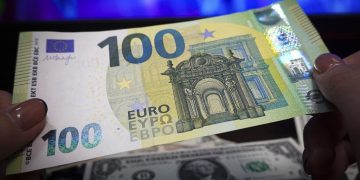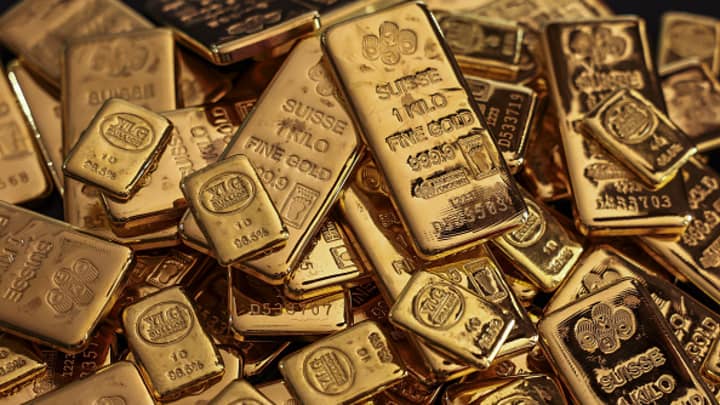Gold prices began June range-bound, marking the first month since February 2024 without a new high. Will gold shine even more after gray June?
Driven by the global central bank gold rush, global gold prices surged 20 per cent between mid-February and mid-April, culminating in May when the spot price of gold hit a record high of $2,450.13. But since then, one by one more than expected US economic data led to the gold price began to range volatility, high gold prices also led to the central bank in May to buy gold rhythm suspended. Throughout June, gold traded in a tight range, with a high just above $2,387 and a low just below $2,287.
As of 18:40 Beijing time on July 4, the international gold spot price was at $2359 / ounce, and there were signs of a return to the rally in the near future.
Guarding the gold may be guarding the wallet. “We are still bullish on gold in the long term, mainly after the consolidation in the past few months, we think central banks will continue to add weight, and with the geopolitical situation still relatively high risks, we think gold can reach $2,450 in the next 12 months,” Wang Jie, chief investment strategist at Standard Chartered China Wealth Management, told CBN.
A temporary cooling of the “gold rush” hit gold prices
Since the beginning of this year, the central bank’s “gold rush” has driven the enthusiasm of global investors to buy gold, after all, the central bank’s buying volume is an irresistible bull force.
FawadRazaqzada, senior analyst at Gain Group, previously told reporters that in the case of gold, one of the reasons for the sharp rise in prices in recent months has been large-scale purchases by the Chinese central bank. In May, however, the People’s Bank of China ended an 18-month buying spree. But in his view, as long as the central bank does not sell reserves, the impact on gold prices will not be too large, gold is still favored by investors.
Data from June 7 showed that in May, the People’s Bank of China ended an 18-month streak of increasing its gold holdings since November 2022. The price of gold fell more than $67 an ounce that day, at one point falling to $2,307, a drop of nearly 3%. By Monday (June 10), the spot price of gold had fallen below $2,300 an ounce, showing the influence of central banks.

Indeed, the world’s central mothers have been the most powerful buyers of cash over the past year. China’s central bank in April gold reserves increased by 60,000 ounces month on month, achieving “18 consecutive increases”. According to the World Gold Council, global central bank net gold purchases reached 290 tonnes in the first quarter of 2024, a record quarterly high, led by Turkey, China and India.
Some industry insiders told reporters that this does not mean that the central bank’s gold buying trend has reversed, but it may be that in the context of high gold prices, the central bank has slowed down the pace of gold purchases, but the trend of diversified allocation is clearly accelerating, especially among emerging market central banks.
It is expected that in the future, emerging markets will still become a more important force to buy gold. Wang Lixin, CEO of the World Gold Council China, recently told the First financial reporter that European and American countries developed earlier, and the allocation of gold was also earlier, while the development of emerging economies in the early years has just started, and they need to retain foreign exchange to meet foreign trade needs. As these countries become richer and there is a stronger global need for diversification, gold will naturally be added to the holdings of emerging market central banks.
In addition to the central bank, in fact, more sovereign institutions and other “big funds” have fully recognized the role of gold in investment portfolios in recent years.
In addition to the central bank’s “purchasing power”, most investment institutions still believe that gold prices will have the potential to rise, the US interest rate cut “late but come” expectations, years of high inflation has weakened the value of fiat currencies, and the strong appeal for diversification are all reasons to support gold prices, currently UBS and other international investment banks have given a target price of $2,500 per ounce, Goldman Sachs is $2,700.
JuanCarlosArtigas, head of research at the World Gold Council, previously said in an interview with First Finance that in general, four major factors drive gold prices – the level of economic expansion, risk and uncertainty, opportunity cost (interest rates) and market momentum.
In terms of short-term opportunity cost, the turning point for interest rate hikes has historically been when gold prices have taken off. Ankay believes that for gold, a non-interest-bearing asset, interest rate cuts mean that the opportunity cost of holding gold for investors will be reduced, and vice versa.
“Given that gold has held up despite the recent strength of the dollar, it is reasonable to expect that gold could make new highs if the dollar weakens from here.” Therefore, the upcoming data will need to be closely watched. Any further signs of weakness in the U.S. economy could increase market expectations for multiple rate cuts in 2024 and could dent the dollar’s gains, especially against commodity currencies.” Lazarzada told reporters.
The US non-farm payrolls data for June, due to be released on Friday evening, will be in focus. The May data unexpectedly exceeded expectations (by nearly 100,000), which also caused interest rate cut expectations to plummet, hitting gold and risk assets. This time, the market is expected to add 180,000 jobs, compared with the previous 272,000, the unemployment rate is expected to remain at 4%, and hourly earnings growth is expected to slow to 3.9% from 4.1%.
The agency believes that the better-than-expected employment data will consolidate the Federal Reserve’s outlook of “one rate cut a year”, which will be positive for the dollar. On the contrary, if the data is weak, it will stimulate interest rate cut expectations and positive trends in gold and US stocks.
Several traders also told reporters that gold has been in a consolidation pattern recently, but recent moves point to a potential breakout. The bears will need to apply significant pressure to turn the trend in their favor. “Now that gold has broken through short-term resistance at $2,325, the next goal is to break through the next key resistance at $2,365. A break above this level would be a strong indication that the bullish trend has resumed. Conversely, if downward support at $2,300 is decisively breached, this could undermine our short-term bullish gold call.”
Zheng Renyuan, the father of target date fund and senior advisor of Fidelity Investments Greater China investment strategy and business, recently told reporters: “In the investment portfolio, if there are only two types of assets (stocks and bonds), the risk is really difficult to control, and you can only choose the time.” But timing is not our strong suit, so in pension investing, more and more institutions are choosing to allocate to gold, alternative assets and even some real real estate for risk diversification.”

Taking the famous Norwegian sovereign wealth fund as an example, the institution has also increased its allocation to gold in recent years, because in the institution’s view, as long as 2% to 5% of the capital is allocated to gold, it can greatly mitigate the risk of the portfolio, because many risks are non-linear.
Three motives drive long-term gold allocation by central banks
In the medium to long term, a recent survey by the World Gold Council also shows that the geopolitical and financial environment has become increasingly complex, making gold reserve management more relevant than ever.
The Central Bank Gold Reserves (CBGR) survey for 2024 was conducted between February 19 and April 30, 2024. The survey received responses from 70 central banks, of which 29% plan to increase their gold reserves in the next 12 months, the highest level since the survey was launched in 2018.
The main motivations for the central banks surveyed to continue buying gold include: rebalancing gold reserves; Adjust the purchase amount of domestic gold in order to achieve a better level of gold strategic reserve; Concerns about volatility in financial markets include increased risk of crisis and rising inflation.
At present, there are frequent conflicts in the Middle East and protracted conflicts in Ukraine. The findings come against a backdrop of ongoing geopolitical tensions. From a macroeconomic perspective, global inflation has begun to cool, but the pace of economic recovery is uneven, and the potential fragility of the financial system is also worrying. As a result, “interest rate levels,” “inflation concerns,” and “geopolitical instability” remain the main considerations for central banks to make gold reserve management decisions, as they did last year.
Almost all central banks believe the dollar’s share of official reserves is likely to fall. Central banks in advanced economies and emerging market and developing economies (EMDE) have been more optimistic about the future share of gold in total global reserves (and correspondingly more pessimistic about the future share of the dollar), and advanced economy central banks have clearly shifted to the same view this year.
What proportion of total global reserve assets will the dollar account for in the future? According to the survey, 69% of central banks surveyed believe that the share of dollar reserves will decline over the next five years, a significant increase from 55% in 2023 and 42% in 2022. 69% of the central banks surveyed believe that the share of gold will increase over the next five years. That’s up from 62% in 2023 and 46% in 2022.































